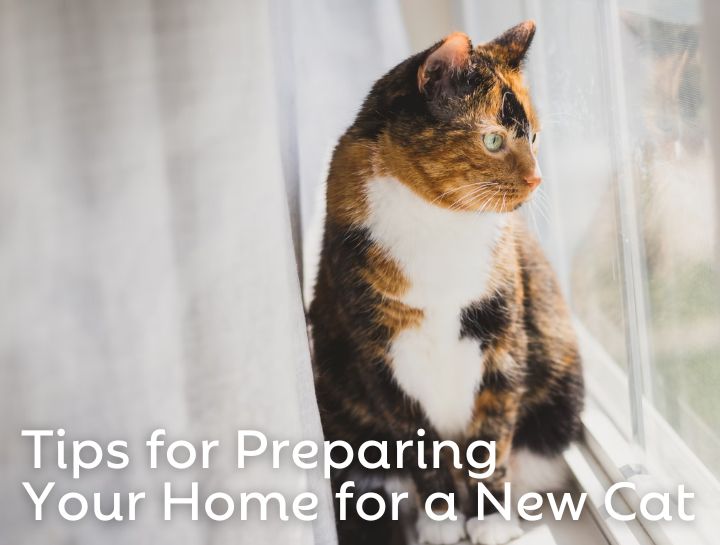Tips for Preparing Your Home for a New Cat

Have you decided to welcome a new cat into your family? Congratulations! Adopting a cat or kitten is an exciting step, but it takes a little preparation, especially for a first-time cat owner. June is “Adopt a Cat” month, so we’re giving expert tips on how to make your house or apartment the purr-fect home for your new feline friend.
Steps to Cat-Proof Your Home for a New Cat or Kitten
It’s no secret that cats are famous for getting into a little bit of mischief. That’s why cat-proofing is so important when adopting a cat or kitten. Shift your perspective to see exactly what your new cat will see by looking under beds, chairs and couches. Secure any electrical cords to baseboards so they won’t look tempting to chew on.
Our homes are often filled with items that are toxins for cats. Medicine, cleaning and gardening products, human food like garlic and chocolate, and houseplants are all common causes of cats that should be removed or securely stored.
Lastly, since cats are prone to find hiding spaces, inspect your home for entrances to areas your new cat might get trapped, like a basement or attic.
How to Create a Welcoming Space for your New Cat or Kitten
Now that you have made your home safe for your new cat, it’s time to make it feel like home! We recommend setting up a welcome space in a quiet area of your home where your new cat can get comfortable before exploring.
- A comfy bed - One that also doubles as a hiding space is nice!
- Food and water bowls - Create one area for food and one for water.
- Litter tray and cat litter - Place this in a private location as far away from food and water as possible.
- Scratching post
- Cat carrier - We recommend one that is strong, secure, and easy to clean.
- Toys for playing
What to Feed A New Cat or Kitten
Considering your new cat’s diet right away, or even before adopting your new cat or kitten, is an important step in preparing your home for a new cat. There is a perception that feeding a cat wet food is “spoiling” the cat – but feline science says otherwise! Cats are classified as obligatory carnivores, meaning that they have evolved to eat a diet that is high in animal-based proteins. Feeding your cat dry kibble is fine, but any kibble should be high in animal-based protein and grain-inclusive. Look for the AAFCO logo on any food you purchase, which indicates it will meet your cat’s dietary needs. Please discuss with your veterinarian for further suggestions on feline nutrition.
How to Know If Your New Cat or Kitten is Adjusting to its New Home
As your cat adjusts to its new home, you may start to see signs of how well your cat or kitten is settling in.
If a cat or kitten is adjusting well to a new environment, you may notice:
- Exploring the house
- No longer hiding away and seeming more confident
- Seeking you out for attention and company
- Eating well
- Playing
- Brushing up against you and items in the home to leave their scent on them
- Regularly grooming themselves
On the opposite side of the spectrum, if a kitten or cat is not adjusting well, you might see signs of:
- Hiding and avoiding people
- Not eating, or only eating overnight
- Only using the litter box overnight
- Under or over-grooming
- Scratching
- Inappropriate urination or defecation
- Not displaying natural cat behaviors like exploring, rubbing up against people and things, or playing
- If your pet is displaying signs of stress after being adopted, don’t worry. The behaviors should improve over time. However, if your cat’s signs of stress are not improving, we recommend you book an appointment so we can help smooth the transition.
Did you just adopt a cat or are you considering adopting one? Call us at (630) 323-5500 to book a wellness check as soon as you can after adoption. We can’t wait to meet your fantastic feline!
